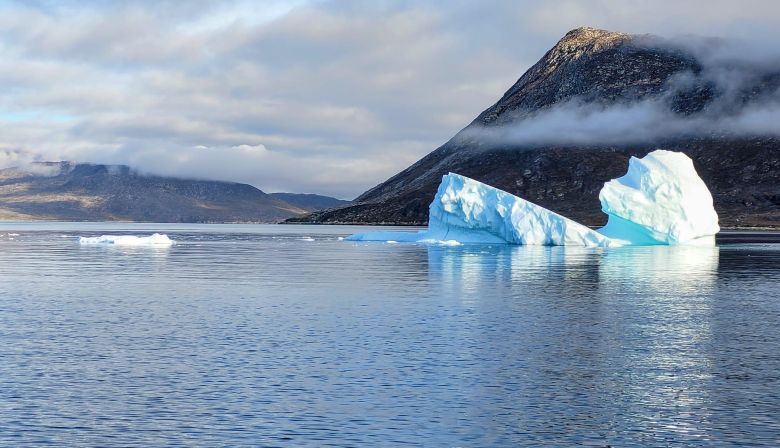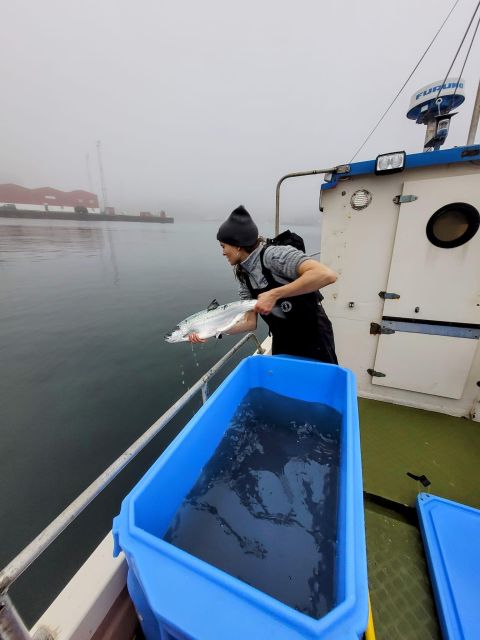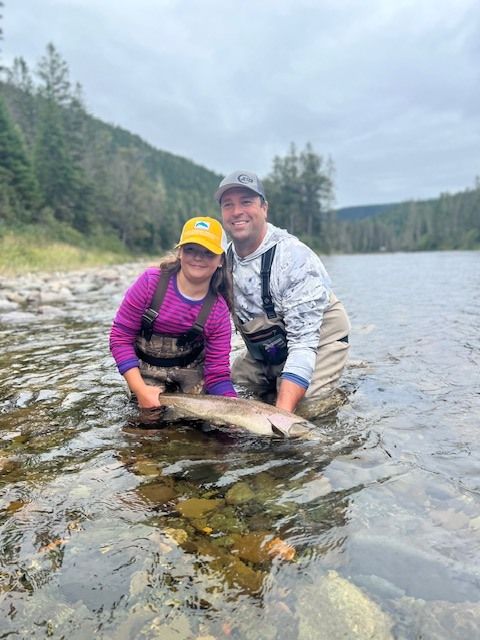
Subscribe & stay up-to-date with ASF

COMPILED BY DEIRDRE GREEN (DGREEN@ASF.CA)
Sep 30, 2022
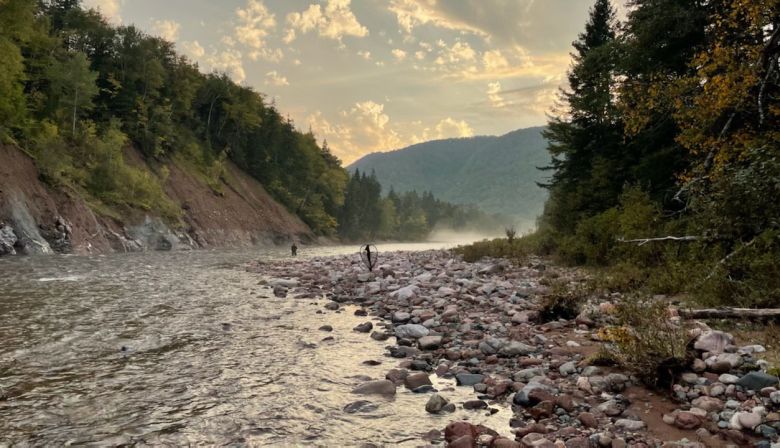
Clean-up drags on from Hurricane Fiona’s fury. In my limited travels between Guysborough, Antigonish and Pictou counties this week, it wasn’t difficult to understand why so many remain without power. I lost count of the fallen trees weighing down power lines. It’s heartbreaking to see the large, old trees lost. But even moreso, the families displaced from their homes due to extreme damage.
All things considered, we personally weathered the storm well. Antigonish sustained a lot of damage. We are lucky to have power restored now but even as I work on RiverNotes, WIFI remains spotty. This is now the fifth time I have typed this sentence — and, save!
On a positive note, we needed the rain. Perhaps not all at once, but with riverbanks swollen, it’s looking as though angling conditions will prime for the weekend. If you’re able to get out, send us a little note about Hurricane Fiona’s impact on your home river (rivernotes@asf.ca).
Wishing everyone a safe and fishy October on the water.
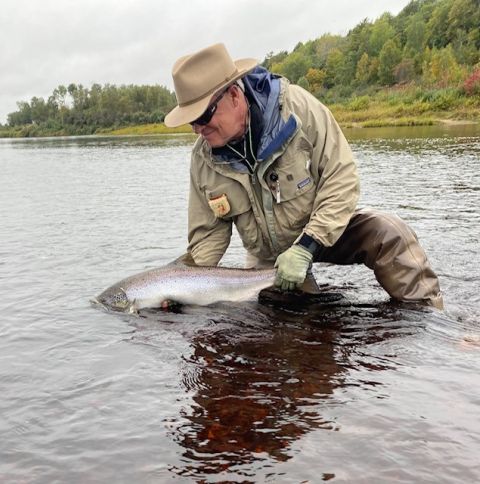
Échos des rivières au 30 septembre 2022
Charles Cusson, Directeur québécois.
L’ouragan Fiona a fait sentir sa présence sans trop de dégâts au Québec qui a causé des hausses de débits sérieux en peu de temps qui va sans doute améliorer les conditions de pêche jusqu’à vendredi de cette semaine.
Certains pêcheurs qui ont parcouru nos rivières depuis quelques jours ont généreusement partagé des photos de leurs exploits. Nous souhaitons une bonne pêche aux chanceux qui vont compléter leurs saisons parmi les beaux décors de la saison automnale.
Alors, je vous reviens la semaine prochaine avec une récapitulation de la saison 2022 et un aperçu des statistiques au 30 septembre.
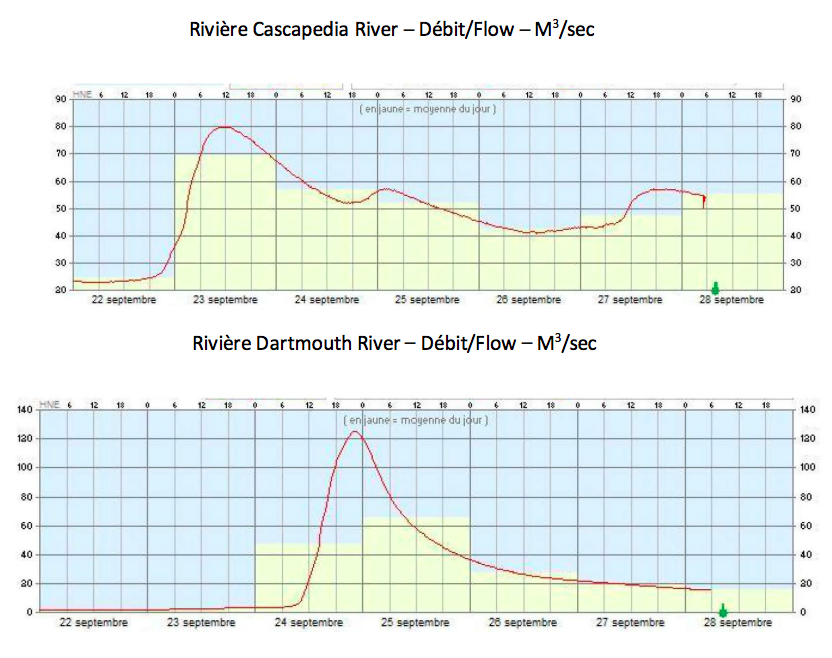
Charles Cusson, Director of Quebec Programs shares:
Certain salmon regions of Quebec felt the wrath of hurricane Fiona recently which improved water flows in a very short period of time. We expect this should improve conditions until this Friday.
Some lucky anglers who have been able to angle on our rivers over the last few days have generously shared photos with us. Good luck to all fishing during the last days of the season in the annual autumn rhapsody of colours.
Next week, I’ll recap the 2022 season to September 30th.
Tight Lines!
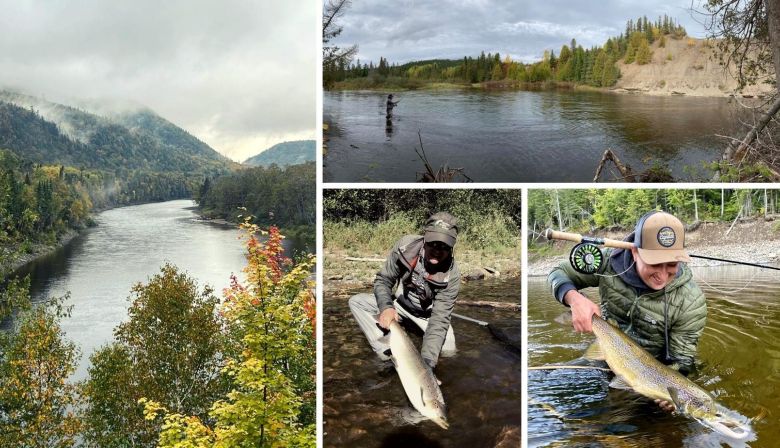
Photos:
Left: Scène automnale de la Cascapédia | A classic autumn Cascapedia landscape
Photo: Dan Greenberg
Top Right: Fosse Pit de Sable sur la rivière Madeleine | The last few days of the season at the Sand Pit pool on the Madeleine Pool
Photo: Don Bourgouin
Bottom Right: Maxime Wehinger sur la rivière Madeleine | A healthy buck returned to the Madeleine River by Maxime Wehinge
Photo: Jimmy Voyer Capsize
Bottom Centre: Bruno Mayot gracie un saumon d’automne sur la Rivière York | A beautiful autumn fish released by Bruno Mayot on the York
Photo: Simon Tétrault

A Family Affair
Alan Harlow and his four children returned this past Sunday from what has become an annual family trip to Lynn’s Brook Camp on the Grand Cascapedia. Conditions were prime and lasting memories made. Harlow noted that he enjoys fishing the Grand for many reasons but especially appreciates how welcoming the folks from the Cascapedia River Society are to youth and novice anglers.
When asked about the adventure, Alan’s daughter Ashley (age 8) shared:
What was fun about the trip is that I caught and landed my first ever salmon!!! It was a 14 pounder! My arm and hand was hurting a lot but it was worth it all. It was a girl salmon and she was so, so pretty!
Alan’s son, Mason (age 12) commented:
This trip was definitely one to remember. Personally it was by far my most successful… I hooked 15 fish! The water levels were perfect and the fish were taking! The biggest fish that I landed this trip weighed 28 pounds! It was one of my favorite trips ever and I enjoyed every moment of it!
For many experienced fly fishers, instilling within their children an appreciation for nature and conservation through fly fishing has become the highlight of their angling journey.
Alan beamed with fatherly pride as he said:
I love watching my children hook and release salmon more than I enjoy doing it myself. I would much rather have one of their lines in the water than my own. It’s just so rewarding to see their faces and share in their excitement.
The future of our rivers and fish are truly bright with youngsters like the Harlow’s at the helm. If you have images of your family fishing this fall, please send into rivernotes@asf.ca for a chance to be featured in our blog and on social media.
~
Dimanche dernier, Alan Harlow et ses 4 enfants ont continué leur tradition d’un périple annuel à la rivière Cascapédia et au (Chalet Ruisseau Lynn’s – Cascapedia River Society). Des souvenirs inoubliables ont été vécus grâce aux conditions idéales.
J’adore pêcher la Cascapédia pour plusieurs raisons, mais particulièrement à cause de l’accueil que nous recevons des gens de la Société Cascapédia, surtout envers les jeunes et les débutants, cite Alan.
Ashley (8 ans) une des fillettes d’Alan à partager le fait que:
J’ai capturé mon premier saumon à vie (6 kilos) et je ne l’oublierai jamais ! Le saumon était une femelle de toute beauté. Ça valut la peine même si j’ai eu mal au bras et à ma main pendant le combat.
Mason, (12 ans) le fils d’Alan cite que:
Ce voyage va toujours me rester à l’esprit. Le plus fructueux de ma jeune vie, j’ai piqué 15 saumons dont un que j’ai pêché de 12,5 kilos! Le niveau de l’eau était parfait ! J’ai beaucoup aimé ce voyage à faire rêver!
Pour de nombreux pêcheurs à la mouche chevronnés, transmettre à leurs enfants le goût de la nature et de la conservation devient de plus en plus le pourquoi d’une aventure de pêche.
Alan prononce avec fierté qu’il adore observer ses jeunes lorsqu’ils piquent un saumon et ensuite le retourne vers son voyage vers la reproduction. C’est valorisant d’apercevoir leurs réactions lorsqu’ils sont aux prises avec Salar.
L’avenir de nos rivières et nos saumons sont entre bonnes mains considérant l’engagement et l’enthousiasme des jeunes Harlow. Si vous voulez partager les photos de vos sorties de pêche en famille de cet automne, veuillez svp nous les faire parvenir au rivernotes@asf.ca et elles pourraient être publiées dans notre blogue ou sur nos réseaux sociaux.

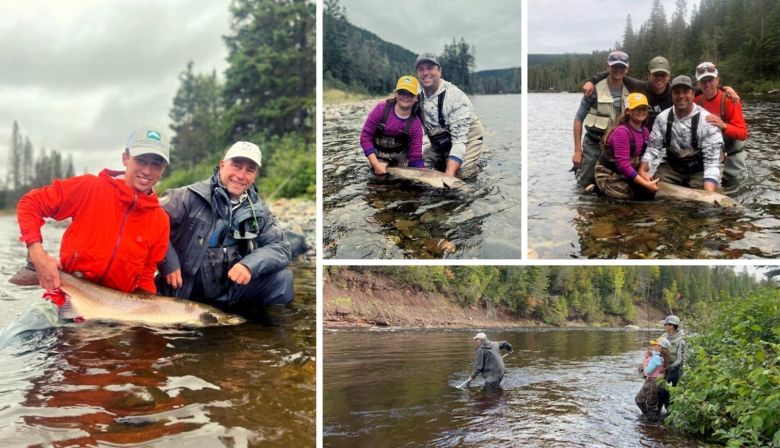
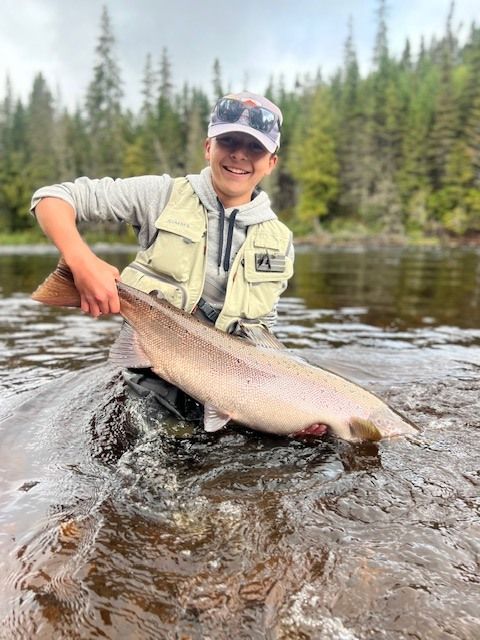
Francois Chiasson, Director of the Nepisiguit Salmon Association shares:
A km from the mouth of the Nepisguit and I saw one fish roll there and a few anglers at the first pool we hit no one had caught anything and spoke to another angler Sunday night and had not seen anything at all.
Angling has been slow. I was out fishing earlier this week and saw one fish roll about a kilometre from the mouth of the Nepisiguit. There were a few anglers at the first pool and no one had luck. I spoke to another angler Sunday evening who had not seen anything at all.
Water levels are quite low and temperatures were sitting at 17 C earlier this week. Early returns were really good in June and early July, however after that the counts have not been what we had hoped for this time of year.
Robert Kryszko, Special Research and Programs Coordinator with the Pabineau First Nation, supplied the following counting fence totals — as of September 28th, 2022: 179 Atlantic salmon and 51 grilse have been counted.
Chiasson continues:
Typically, we see a good run the last week of July and fish coming in consistently through August and September. A few fish are being observed here and there at Youghall Beach, so while anglers are disappointed right now, we remain hopeful that a significant rise in water levels may trigger fish to move upstream.
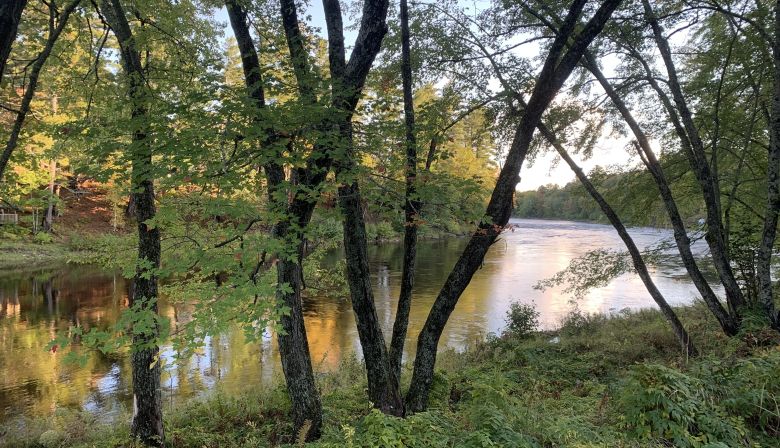

Zoë Coates (Hogan’s Salmon Lodge) noted that the effects of Hurricane Fiona were definitely seen on the Miramichi:
The river rose a solid five feet and peaked on September 24th. The water now is high, dark but clean, despite full trees being observed coming down the river last weekend. I was speaking with anglers and they reported that before the heavy rains, a lot of fish were being caught.
Black Brook Salmon Club is upriver from Hogan’s and Manager, Eddie Colford commented that “the river rose again two inches on Wednesday night as a few heavy showers fell upriver. The Cains however dropped a foot”.
Colford continues:
Angling was unreal the week before Hurricane Fiona. We were seeing fish roll and jump every few seconds. This high water is great for the fish, hard on the fisherman. But, the fish are here! We have rolled a few and we landed that nice 20 pounder mid-week. We expect once the water level lowers again a bit, angling should pick up again.
Rodney MacEachern (Dept. of Natural Resources & Energy Development) also shared the Northwest Miramichi Barrier Report and the Dungarvon Barrier Report for September 25th, 2022 late this week.
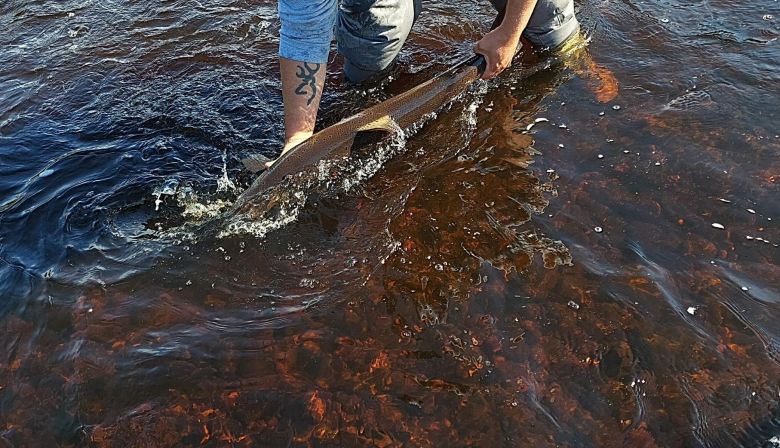
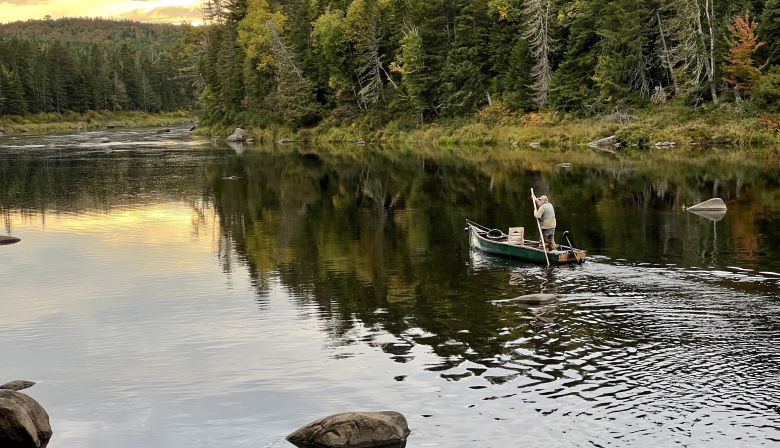
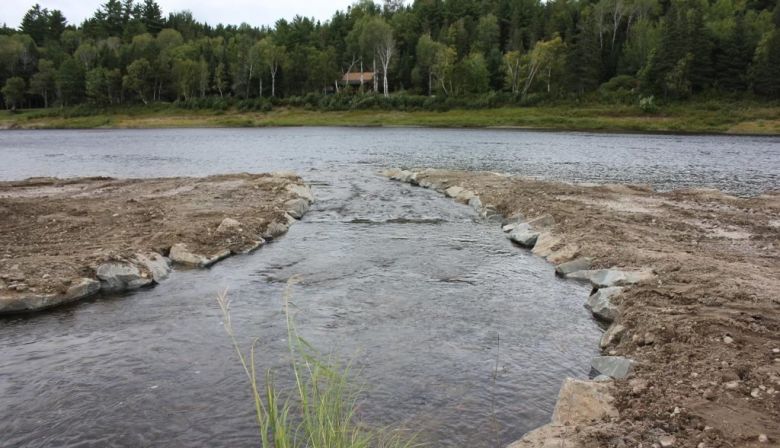
Restigouche Release
Fishing has slowed on the Kedgwick and despite the rain that fell late last week, water levels remained static. Genevieve from Chalets Restigouche noted that there were not as many anglers fishing recently. Perhaps because many have headed to Quebec for moose hunting. For those that have been on the river, they are still seeing a lot of large salmon upriver, some of which are being hooked.
Denis Boudreau notes there are not many anglers fishing the Restigouche regularly now. Denis however shared he released a 34-pound beauty in June after heavy rains.
The water was still a bit dirty so I was using one of my biggest producers, a Picasse variant called Jana’s Jewel (named after my wife).
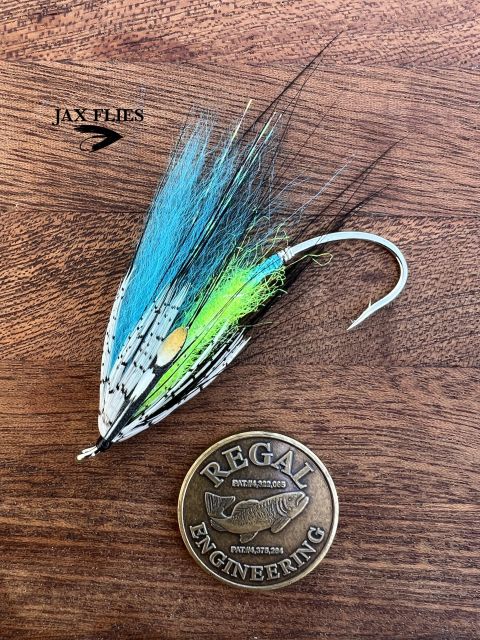
Matt Dort writes:
Hurricane Fiona left many of us with challenges and serious concerns. Respecting our rivers, it brought the rain we needed but with that, it also brought devastating winds that left many local paths to salmon pools inaccessible and alternative routes are now needed. The storm surges associated with Fiona also left me wondering how the Atlantic Salmon cope with these strong currents, waves and poor water clarity in the estuaries and harbours as they wait to enter the Northumberland Strait Rivers.
The following images are what I observed the day after Fiona arrived along the Northumberland Strait. I noted many aquatic species washed up along the shore including lobsters, ocean perch, etc. Thankfully, I did not observe any salmon.
Earlier this week, East River in New Glasgow remains very high — conditions that would make for treacherous wading, along with a poor water clarity. The West River in Pictou has lower water levels and better clarity, and this also holds true for Barney’s River.

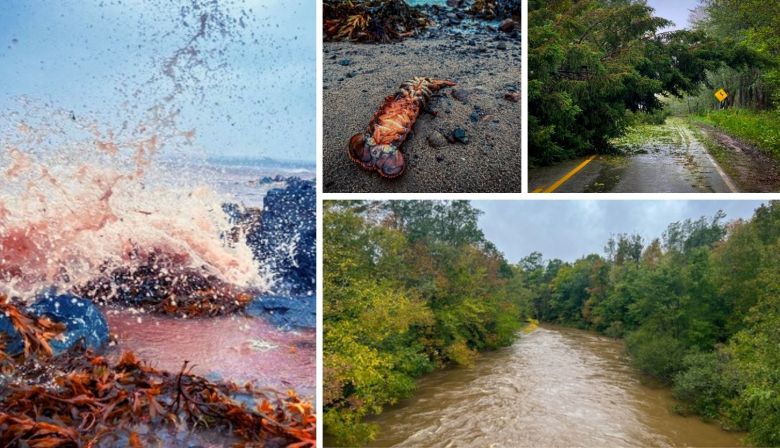
Guiding and fishing has resumed on Cape Breton rivers with reports of fish being hooked over the last few days. Water levels are around .760 and dropping on the Margaree.
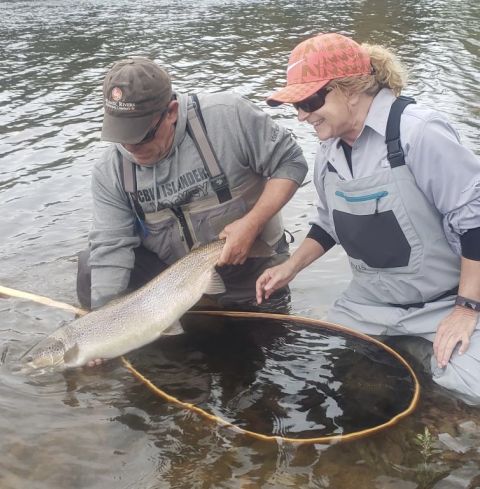
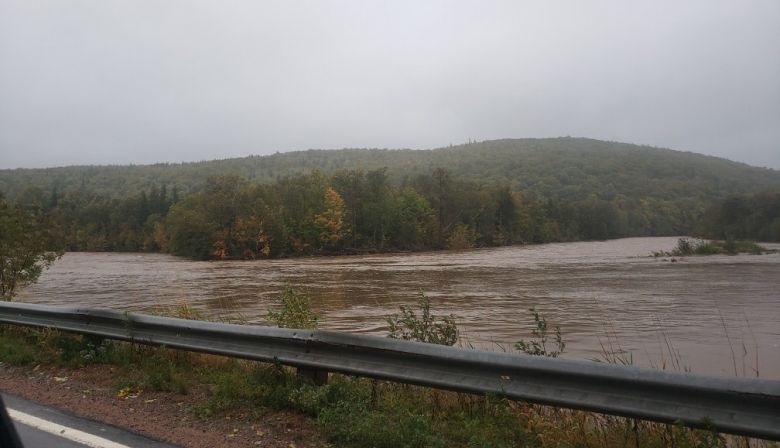

From the desk of NL Director, Don Ivany:
The number one news event in Newfoundland and Labrador this past week has definitely been the impact of hurricane Fiona, and the destruction and devastation left behind in its wake. Communities along the southwestern portion of the province, especially those from Port Aux Basque through to Burgeo, were particularly hard hit as they bore the full brunt of the storm.
Reports indicate that between 200-300 mls of rain fell on some areas in this region in a short period of time. Combined with winds that reached 177kms per hour at their peak, the hurricane wreaked havoc throughout the region. But the biggest impact was from the huge storm surge associated with the hurricane (estimated to be 20 meters high) which blasted the adjacent coastline, ripping dozens of homes from their foundations before smashing them to pieces, and sweeping the left-over debris out to sea. Preliminary estimates indicate the damage left behind in this area alone is between $300-700 million dollars. Considering this was one of the worse storms ever to rock the province, it is a miracle that one life alone was tragically lost.
As the storm moved up the West coast of the province, through the Northern Peninsula, and finally out into the Labrador Sea, the winds became much less intense, and rainfall amounts quickly diminished. As such, very few rivers in the province were impacted by the storm, including the ‘Big Three’ (the Lower Humber, Exploits, and Gander Rivers) which are the only ones that remain open to angling. All three of these rivers will officially close for the season on October 7th, 2022.
Note: DFO has not released any additional fishway counts for NL since Sept 11, 2022.
River by River
Humber River – As mentioned above, the Humber River received very little rain during the past week despite a major hurricane moving through the region. In fact, the river actually dropped during the past week and is currently very low for this time of year. While the water temperature has dropped a little, the fishing is still very slow despite a good sign of fish in the river. Angler, Steve Walker, reports that he fished the Lower Humber for about 30 hours this past week and did not even get a rise. While he reports there were lots of fish in the river, he only saw one fish hooked during the time he was there. Angler, Dion Dakins, also fished this section of river a couple of evenings last week, and while he too saw some fish in the river, he also reports angling was slow. His overall assessment of the time he spent fishing the lower Humber this year is that there didn’t appear to be as many fish in this section of the river this year, as there was last year.
Exploits River – According to Kim Thompson, the General Manager with the Environmental Resources Management Association (ERMA), the Exploits River area did receive enough rain this past week to cause the water level on the Exploits River to rise, and fishing conditions were pretty good. She also indicates DFO is still operating the fishway at Bishop Falls, and ERMA is still operating the fishway at Grand Falls. Kim reports there are still fish moving through the river, including a nice run of males averaging 7-8 lbs each. Other reports indicate an odd fish is still being caught on the river but there were fewer people fishing the river this past week, compared to previous weeks.
Gander River – While the Gander area received a little rain this past week it made very little difference to the water level on the Gander River which is still very low for this time of year. The water temperature is still ranging in the high teens as well, making for less than ideal angling conditions. Not surprisingly, while reports indicate there are still signs of fish on the lower Gander, fishing has been slow for most.
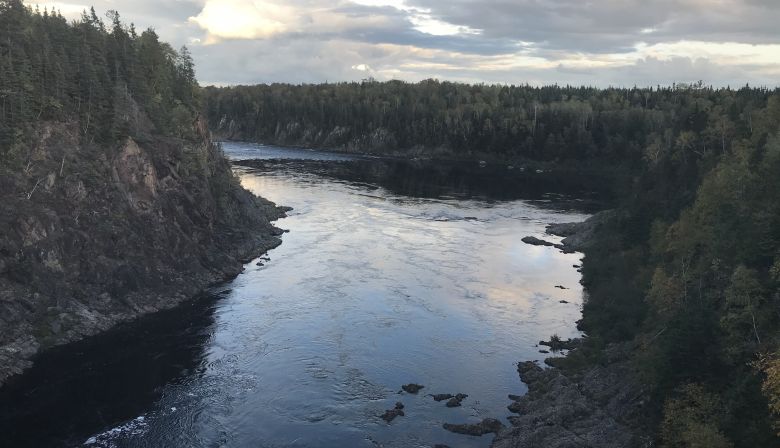
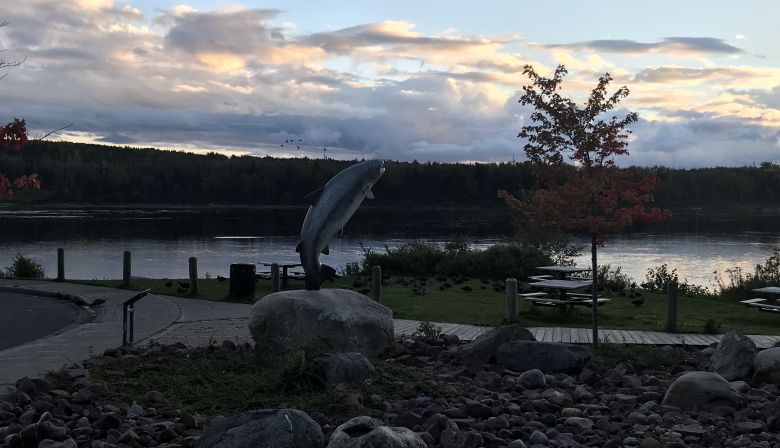
AROC Adventures
The team at Atlantic Rivers Outfitting Company spent last Monday on the Gander River reports sales associate, Jack McCann:
At First Pond Bar, a number of fish were hooked on everything from bombers (normal and long hackle), muddlers and popular fly, None of your Business. Although fishing was better in the morning, Tyrone Buckle landed the largest of the day at dusk — a 70cm beauty.
Nova Scotia friends — AROC will be visiting the Margaree again this year October 13-16th. Be sure to stay tuned for casting demos, fly tying events and much more. Follow AROC on Instagram and Facebook for the latest news from the shop!
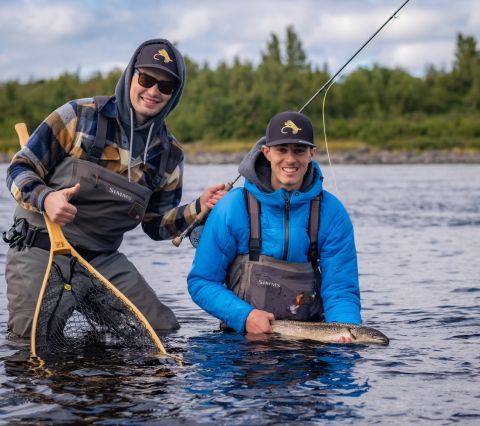
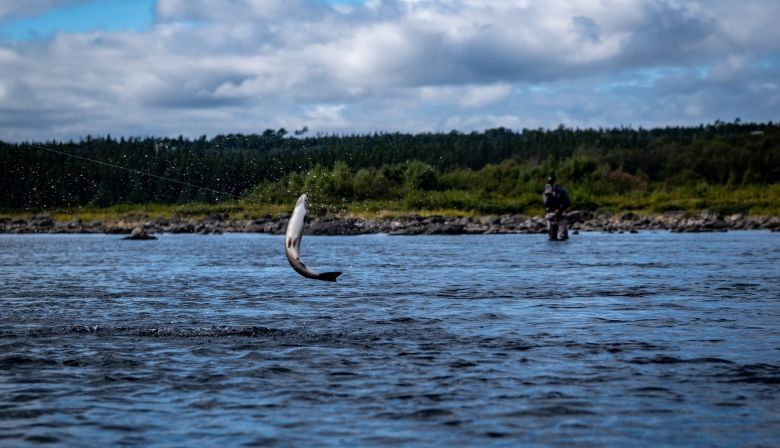
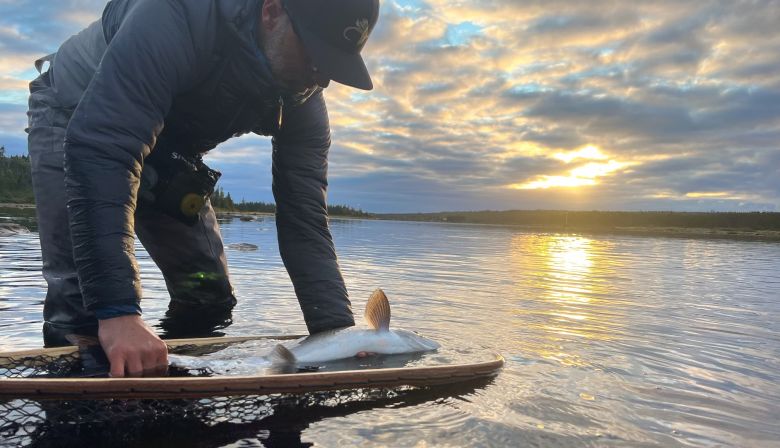
Martin Silverstone writes:
Fish of a thousand casts, or is it ten thousand? One thing is certain, Atlantic salmon researchers, like anglers, have to be patient. Atlantic salmon fishing is a waiting game, and it’s been no different for scientists tracking salmon in their marine feeding grounds and on the return migration to their natal rivers.
The first two years that ASF sent a research team to Qaqortoq, Greenland, in 2018 and 2019, it was a learning experience. It was disappointing when the pandemic prevented any travel in 2020 but things improved appreciably in 2021 when Jon Carr and his crew managed to tag 70 fish with pop off satellite tags (PSATs). Now, a team led by ASF biologist Heather Perry has been tagging Atlantic salmon in Qaqortoq, Greenland since September 15. Her team includes Carole Anne Gillis (Gespe’gewaq Mi’gmaq Resource Council: GMRC) and David Roth (PhD student at UNB Fredericton). It’s a collaborative effort with recent funding support from the Environmental Sciences Research fund (ESRF) and includes researchers from DFO, ASF and NOAA.
Wind and rain kept the team off the water the first few days, but when the weather improved, they were ready. Long days that often began before sunrise were rewarded with steady catches of Atlantic salmon and in 10 days the research group managed to attach more than 70 tags.
Jon Carr and a fresh crew of researchers arrived on September 25 with a fresh set of satellite and acoustic tags to continue the work and to relieve Heather and her team. Carr’s team includes Chantelle Burke (Fisheries and Oceans Canada: DFO) and Ken Whalen (Atlantic Salmon Trust). By September 29, the new team has increased the salmon tagged to 80 PSATS and 30 acoustics. If the good fishing holds, a record number of salmon will be tagged before the season ends which will help further enhance our understanding of Atlantic salmon migration.
